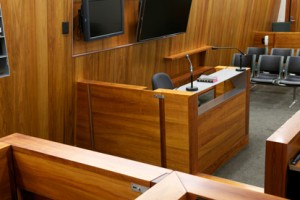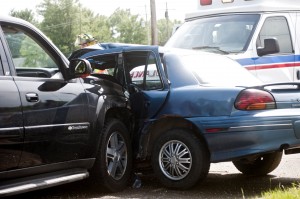Exception To The Hearsay Rule: Declarations Against Penal Interest
People v Soto
2015 NY Slip Op 09316
New York Court of Appeals
Decided on: December 17, 2015
Issue: Whether an unav ailable witnesss statements to a defense investigator that she, not defendant was the driver at the time of the accident and that she fled the scene should have been admitted as a declaration against interest.
ailable witnesss statements to a defense investigator that she, not defendant was the driver at the time of the accident and that she fled the scene should have been admitted as a declaration against interest.
Holding: The Court of Appeals held that whether a statement may be admitted as a declaration against interest depends upon the assurance of reliability that comes from the person’s awareness that what they were saying could get them in trouble with the law. The declaration against interest exception to the hearsay rule flows from the fact that a person ordinarily does not reveal facts that are contrary to his own interest unless those facts are true (Maerling, 46 NY2d at 295; People v Brensic, 70 NY2d 9, 14 [1987]). A statement qualifies as a declaration against interest if four elements are met:
1) The declarant is unavailable to testify as a witness; 2) when the statement was made, the declarant was aware that it was adverse to his or her penal interest; 3) the declarant has competent knowledge of the facts underlying the statement; and 4) supporting circumstances independent of the statement itself attest to its trustworthiness and reliability (People v Settles, 46 NY2d at 167). Here, the Court held that the Appellate Division appropriately concluded, the second factor was satisfied. Seconds after she made the statement to the defense investigator, Hunt asked if she could get in trouble and asked for an attorney.
A statement qualifies as a declaration against interest if four elements are met:
1) The declarant is unavailable to testify ; 2) declarant was aware that it was adverse to his or her penal interest; 3) the declarant has competent knowledge of the facts underlying the statement; 4) circumstances attest to its trustworthiness and reliability
Facts: Police officers were called to the scene of an automobile accident. A witness stated that, while sitting on his front porch, he saw defendant collide with a parked vehicle and when he approached the car defendant was in the driver’s seat. When police arrived, they noticed alcohol on defendant’s breath and arrested him for driving while intoxicated. Lamar Larson, who worked with defendant, testified at trial that he saw defendant at the Pelham Bay Diner that same night he had went to the diner to pick up something to eat for his night shift and saw defendant in his car with a young woman inside. Larson noticed that defendant was slurring his speech and was drunk. He told the young woman to make sure defendant gets home and the woman promised that she would. Larson saw the woman drive out of the parking lot with defendant in the passenger seat.
Two weeks after the accident, a young woman by the name of Janny Hunt told defendant’s investigator that she was the driver of the car at the time of the accident. That night, defendant picked up Hunt in his car, went out to dinner and Hunt agreed to drive so that defendant could have a few drinks. Hunt recounted meeting defendant’s friend Larson in the parking lot and promising to drive defendant home safely. On the way home, Hunt took a turn too fast and hit a parked car. Scared her parents didn’t know she was out with defendant, Hunt told defendant that she had to go and took a cab home. About a week later, she ran across defendant on the bus and he told her that he had been arrested because they thought he had been driving the car. She agreed to assist him.
While recounting the events to the investigator, he asked her if she would sign the notes as her own words. Hunt expressed concern that she would potentially get in trouble for the things she was saying about the accident and asked to be put in touch with a lawyer when the investigator could not answer her questions. When the trial commenced, defense counsel indicated that he would call Hunt as a witness. Because her testimony could qualify as an admission to leaving the scene of an accident and traffic violations, the court appointed an attorney for Hunt. Defense counsel asked the People to grant immunity should she invoke her right to remain silent, a request the People refused. After the close of the people’s case, Hunts attorney invoked the Fifth Amendment on her behalf and after being refused immunity, moved to dismiss the case. The court denied the motion.
Defense counsel requested that Hunts statement be admitted as a declaration against interest. The court ordered a hearing outside the presence of the jury, at which the investigator who took Hunts statements testified. Following the hearing, the court remarked that whether a statement may be admitted as a declaration against interest depends upon the assurance of reliability that comes from the persons awareness that what they are saying could get them in trouble with the law. The court did not believe that Hunt, either at the time she made it or even immediately following, assuming that thats considered contemporaneous, was aware that her declarations could expose her to prosecution for a traffic offense. Finding that the declarant did not give any expression of that awareness until after the statement was given, the court concluded that the statement was inadmissible as a declaration against interest and convicted defendant of aggravated driving while intoxicated and driving while intoxicated.
The Appellate Division reversed and ordered a new trial, holding that the declarants expressions, at the time of or immediately after her statement, of apprehension that she could get in trouble for her conduct, including repeated inquiries about consulting with a lawyer, sufficed to satisfy the requirement that the declarant must be aware at the time of its making that the statement was contrary to his or her penal interest (113 AD3d 153, 161 [2013]). The Court of Appeals held that the Appellate Division properly concluded that seconds after she made the statement to the defense investigator, she asked if she could get into trouble and asked for an attorney. Accordingly, the order of the Appellate Division should be affirmed.
Legal Analysis: The Court of Appeals held that the trial court failed to apply the proper standard when it ruled that the statement was not sufficiently against Hunts penal interest. The Court stated that they have never held, as the trial court concluded, that the declaration against interest exception is limited to serious penal consequences. Rather, until 1970, when the Court decided People v Brown (26 NY2d 88 [1970]), the converse was true?only declarations against pecuniary or proprietary interests were admissible.
Although leaving the scene of an accident that caused property damages constitutes a mere traffic violation, there is no requirement that a statement against penal interest involve a particularly serious crime (see Basile v Huntington Utilities Fuel Corp., 60 AD2d 616, 617 [2d Dept. 1977]. Moreover, the record here is replete with evidence regarding Hunts awareness of the potential criminality of her actions; Hunt verbalized her concern that she would get in trouble as a result of her actions of driving the vehicle during the accident and fleeing the scene, and she repeatedly requested legal advice (People v Fields, 66 NY2d 876, 877 [1985]). That Hunt also worried how her parents would react further demonstrates her understanding of the consequences rather than exhibiting her lack of comprehension. The Fourth factor was also satisfied because Lamar Larsons testimony corroborated Hunts statement.
 In Settles, concerns with the possibility that someone might fabricate a declaration against interest, the Court of Appeals held that, before a declaration against interest is admissible, there must be some evidence, independent of the declaration itself, which fairly tends to support the facts asserted therein (Settles, 46 NY2d at 168). Statements offered against the defendant are subject to more exacting standards and are admissible only when the interest compromised is of sufficient magnitude or consequence to the declarant to all but rule out any motive to falsify (Brensic,70 NY2d at 14-15).
In Settles, concerns with the possibility that someone might fabricate a declaration against interest, the Court of Appeals held that, before a declaration against interest is admissible, there must be some evidence, independent of the declaration itself, which fairly tends to support the facts asserted therein (Settles, 46 NY2d at 168). Statements offered against the defendant are subject to more exacting standards and are admissible only when the interest compromised is of sufficient magnitude or consequence to the declarant to all but rule out any motive to falsify (Brensic,70 NY2d at 14-15).
By contrast, declarations that exculpate the defendant, as here, are subject to a more lenient standard (Brensic, 70 NY2d at 15). In such circumstances, a defendant need not show that the penal consequences to the declarant were of such magnitude that they all but rule out any motive to falsify (id.; Maerling, 46 NY2d at 298). Rather, supportive evidence is sufficient if it establishes a reasonable possibility that the statement might be true (Settles at 169-170.) The Court has explained that even circumstances of seeming indifference that harmonize the statement may be sufficient to furnish the necessary link (id. at 169). In addition, it is irrelevant whether the court believed the statement to be true: if the proponent of the statement is able to establish this possibility of trustworthiness, it is the function of the jury alone to determine whether the declaration is sufficient to create reasonable doubt of guilt (id. at 170).
Larson said he saw a young woman driving defendant’s car shortly before the accident occurred. That defendant was seen driving the car at the time of the accident presents a credibility issue for the jury, as the Court had made clear in Settles (id). Further, defendant and Hunt had no previous relationship that would provide Hunt with a motive to fabricate (Brensic, 70 NY2d at 25). The Court of appeals held that the error was harmless and affirmed the order of the Appellate Division.
